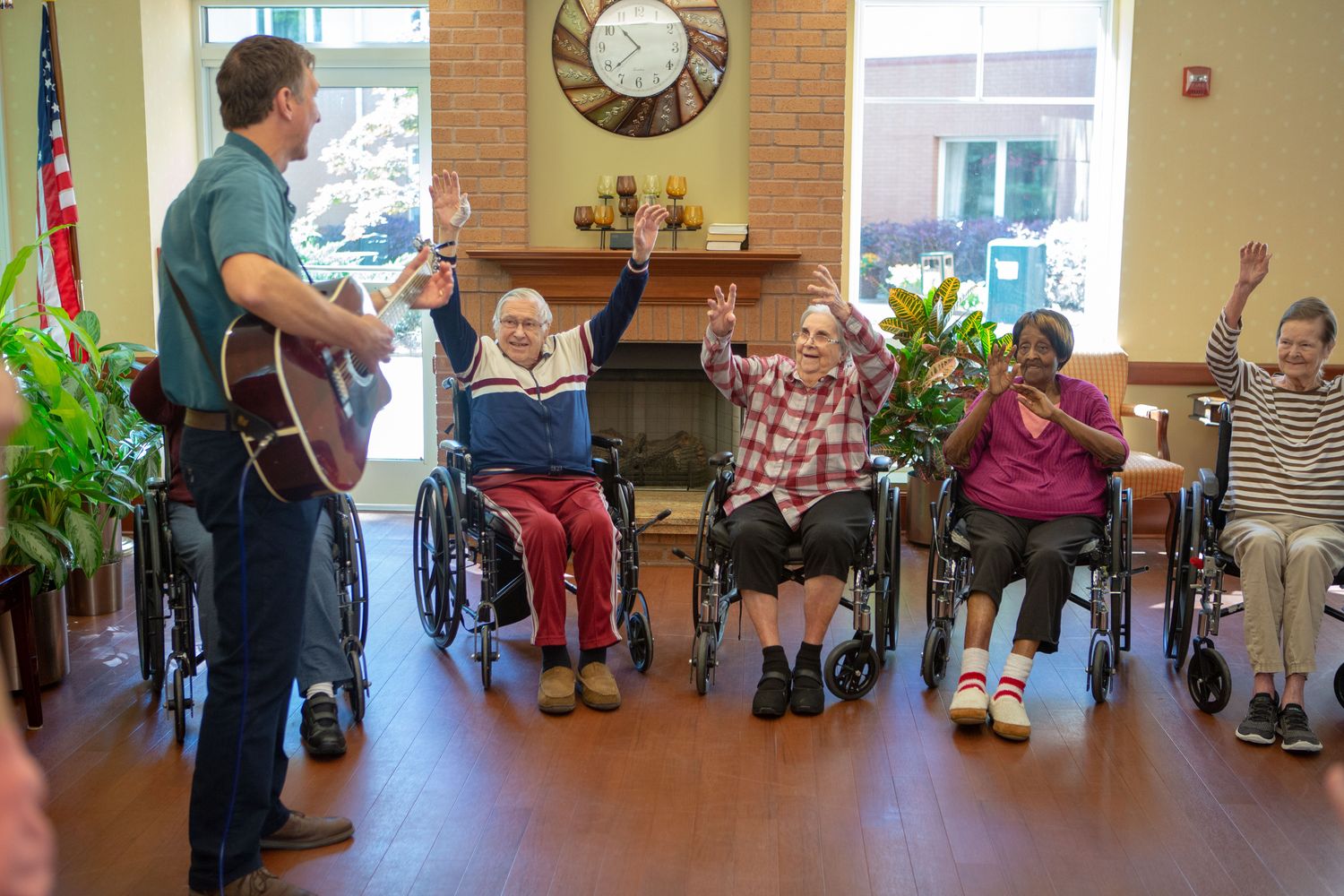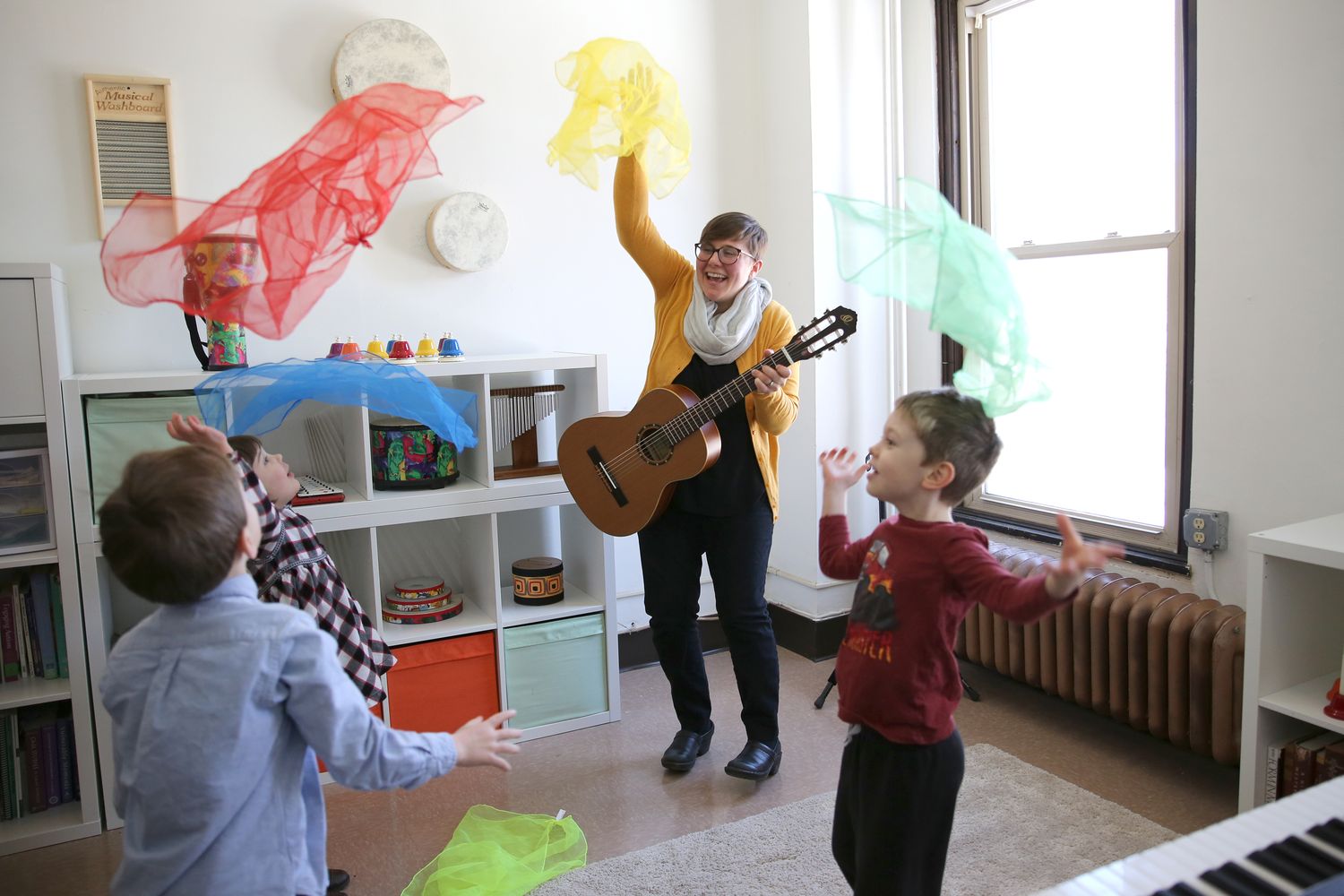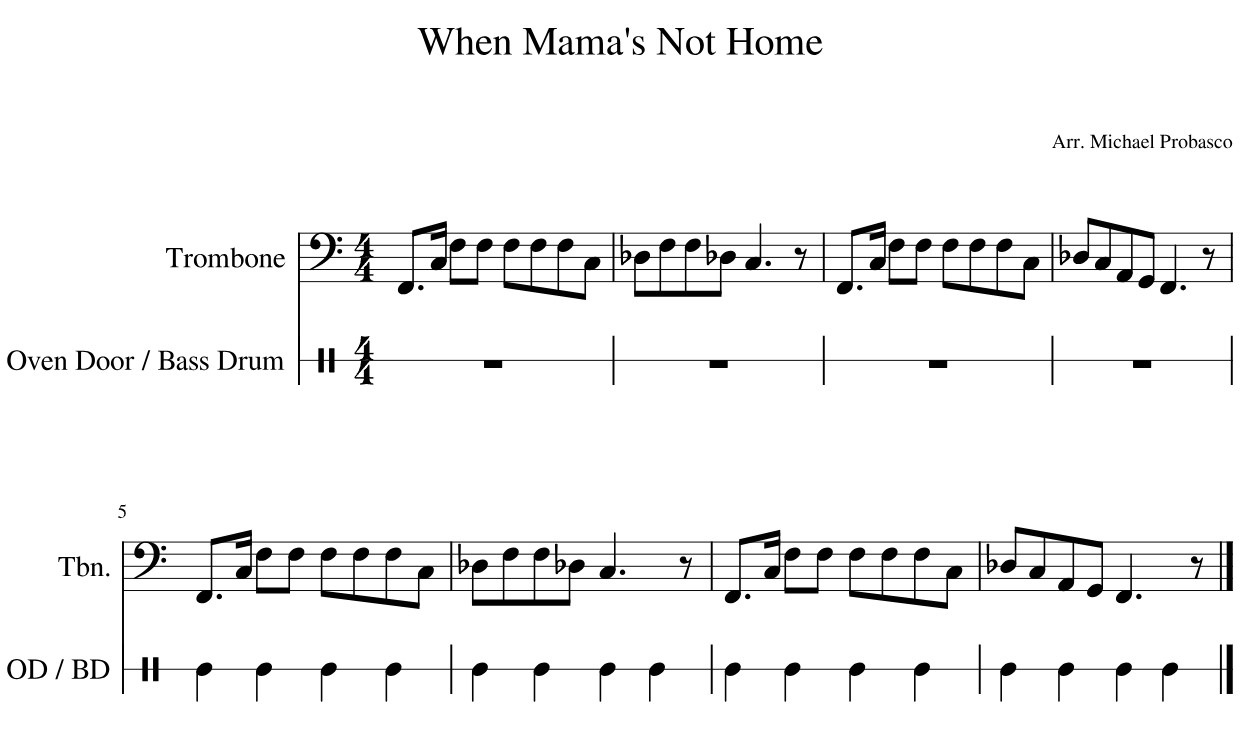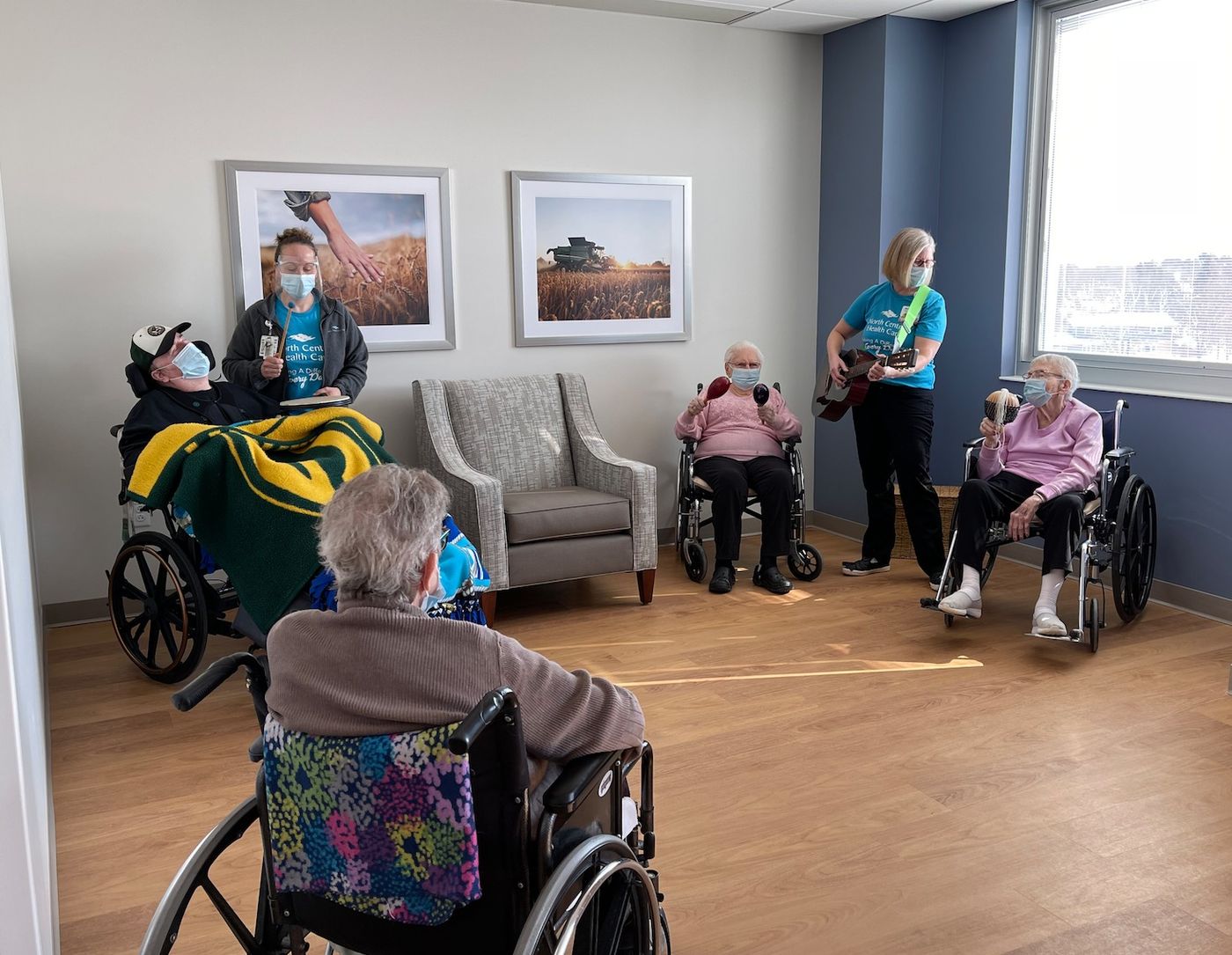Home>Events & Info>Music Therapy>How To Use Music Therapy In A Nursing Home


Music Therapy
How To Use Music Therapy In A Nursing Home
Modified: February 2, 2024
Discover the benefits of music therapy for nursing home residents. Learn how to use music therapy techniques to improve their well-being and enhance their quality of life.
(Many of the links in this article redirect to a specific reviewed product. Your purchase of these products through affiliate links helps to generate commission for AudioLover.com, at no extra cost. Learn more)
Table of Contents
- Introduction
- Benefits of Music Therapy in Nursing Homes
- Types of Music Therapy Interventions
- Creating a Music Therapy Program for Nursing Homes
- Implementing Music Therapy Activities
- Training and Qualifications for Music Therapists in Nursing Homes
- Challenges and Considerations in Using Music Therapy in Nursing Homes
- Success Stories and Case Studies
- Conclusion
Introduction
Music therapy is a powerful and effective form of therapy that utilizes music to help individuals improve their physical, emotional, and cognitive well-being. It has been widely practiced and recognized for its therapeutic benefits in a variety of settings, including nursing homes. In fact, music therapy has shown significant positive outcomes in enhancing the quality of life for older adults and individuals with chronic illnesses or cognitive impairments.
One of the key reasons why music therapy is so effective in nursing homes is its ability to reach individuals on a deep emotional level. Music has a unique ability to elicit memories, evoke emotions, and stimulate cognitive responses. For individuals suffering from conditions such as Alzheimer’s disease or dementia, music therapy can provide a means of communication and connection when other forms of communication may be impaired.
Furthermore, music therapy can also help to reduce anxiety, stress, and agitation commonly experienced by individuals in nursing homes. The soothing and calming effects of music can help to create a more relaxed and peaceful environment, supporting overall well-being. It can also serve as a source of comfort and emotional support for residents who may be experiencing feelings of loneliness or isolation.
Additionally, music therapy can enhance physical health and functioning. Engaging in music-making activities can help to improve motor skills, coordination, and balance. It can also provide opportunities for physical exercise and movement, promoting physical strength and flexibility.
Overall, music therapy is a holistic approach that addresses the physical, emotional, social, and cognitive needs of individuals in nursing homes. It promotes a sense of well-being, improves quality of life, and fosters a sense of connection and engagement with others.
Benefits of Music Therapy in Nursing Homes
Music therapy offers numerous benefits for residents in nursing homes, enhancing their overall well-being and quality of life. Here are some of the key advantages:
- Emotional and Psychological Benefits: Music therapy can have a profound impact on residents’ emotional and psychological well-being. It can help to reduce anxiety, depression, and feelings of loneliness or isolation. Music has the power to evoke memories, elicit emotions, and provide a sense of comfort and joy.
- Cognitive Benefits: Engaging in music therapy activities stimulates cognitive function and enhances cognitive abilities. It can help to improve memory, attention, and concentration. For individuals with dementia or other cognitive impairments, music therapy can provide moments of clarity and connection.
- Physical Benefits: Music therapy involves active participation through singing, playing instruments, or engaging in rhythmic movements. This physical engagement can improve motor skills, coordination, and balance. It can also promote relaxation and reduce muscle tension.
- Social Connection: Music therapy sessions provide opportunities for social interaction and connection. Group music activities encourage residents to engage with others, fostering a sense of community and belonging. Music can serve as a common language that bridges communication barriers and promotes social engagement.
- Pain and Stress Management: The therapeutic effects of music can help to alleviate pain and manage stress. Music has been shown to activate the release of endorphins, which are natural pain-relieving hormones. It can also induce a sense of relaxation, reducing stress and promoting a state of calm.
- Enhanced Communication: For individuals with communication difficulties, music therapy can provide alternative means of expression. Music can bypass language barriers and allow residents to communicate their emotions, needs, and thoughts. This can improve their overall quality of life by providing a way to connect with others and be understood.
The benefits of music therapy in nursing homes extend beyond the individual residents. It also positively impacts the staff, creating a more supportive and fulfilling environment. By incorporating music therapy into the daily activities of a nursing home, it fosters a sense of joy, creativity, and connection among both residents and caregivers.
Types of Music Therapy Interventions
Music therapy interventions in nursing homes can take various forms, depending on the needs and abilities of the residents. Here are some common types of music therapy interventions:
- Active Music-Making: This intervention involves residents actively participating in music-making activities, such as singing, playing instruments, or engaging in movement and dance. It promotes physical engagement, cognitive stimulation, and social interaction. Active music-making can be tailored to individuals or conducted in a group setting, fostering a sense of community.
- Receptive Music Listening: Receptive music listening involves residents listening to recorded or live music in a relaxing and therapeutic environment. This intervention is particularly beneficial for individuals with limited physical abilities or those who find comfort and relaxation through the calming effects of music. Receptive music listening can help to reduce anxiety, promote emotional well-being, and stimulate memories.
- Songwriting: Songwriting sessions allow residents to express their thoughts, emotions, and experiences through creating their own songs. This intervention promotes self-expression, creativity, and empowerment. It provides a channel for residents to share their stories and memories, fostering a sense of validation and connection with others.
- Music-Assisted Relaxation: Music-assisted relaxation involves using soothing and calming music to facilitate relaxation and stress reduction. Residents can engage in deep breathing exercises, guided imagery, or progressive muscle relaxation techniques while listening to therapeutic music. This intervention can help to promote overall well-being and alleviate feelings of anxiety or tension.
- Musical Reminiscence: Musical reminiscence uses music as a trigger to stimulate memories and engage residents in discussions about their past experiences. By playing songs from different eras or genres, music therapists can spark conversations and encourage residents to share their own stories and connection to the music. This intervention enhances cognitive function, social interaction, and emotional well-being.
These are just a few examples of the types of music therapy interventions that can be utilized in nursing homes. Music therapists adapt their interventions based on the unique needs, preferences, and abilities of the residents to ensure maximum therapeutic benefits. The goal is to create meaningful experiences that foster emotional, cognitive, physical, and social growth, while promoting a sense of joy and well-being among residents.
Creating a Music Therapy Program for Nursing Homes
Developing a music therapy program for nursing homes requires careful planning and consideration to ensure its effectiveness and relevance to the needs of the residents. Here are some key steps to create a successful music therapy program:
- Assessing Needs and Objectives: Begin by conducting a thorough assessment of the residents’ needs, preferences, and goals. This can involve gathering information from residents, their families, and the healthcare team. Identify specific areas of improvement or desired outcomes for the program, such as reducing anxiety, enhancing social interaction, or improving cognitive function.
- Collaborating with Healthcare Professionals: Collaborate with other healthcare professionals, such as nurses, occupational therapists, and psychologists, to integrate music therapy into the overall care plan. This ensures that the music therapy program aligns with the residents’ individualized care goals and complements existing therapeutic interventions.
- Creating a Music Therapy Schedule: Develop a schedule of music therapy sessions that aligns with the daily routines and schedules of the nursing home residents. Consider the optimal timing, duration, and frequency of sessions to maximize engagement and participation. Flexibility is key, as residents’ energy levels and preferences may vary throughout the day.
- Choosing Appropriate Interventions: Select music therapy interventions that address the identified needs and goals of the residents. Consider a combination of active music-making, receptive listening, songwriting, and other interventions to provide a well-rounded and diverse program. Tailor the interventions to accommodate various cognitive and physical abilities of the residents.
- Incorporating Personalized Music: Gather information about the residents’ personal music preferences and create personalized playlists or albums. This allows for individualized and meaningful music experiences that evoke memories and emotions. Personalized music can enhance engagement and improve therapeutic outcomes.
- Training and Supporting Staff: Provide training and educational sessions for staff members to familiarize them with the benefits and techniques of music therapy. This empowers staff to support and facilitate music therapy sessions, ensuring consistency and continuity of the program. Encourage staff involvement and collaboration with the music therapist to strengthen the impact of the program.
- Evaluating and Adjusting the Program: Regularly assess and evaluate the effectiveness of the music therapy program. Use feedback from residents, families, and staff to make necessary adjustments and modifications. Measure outcomes and document progress to demonstrate the impact and value of the program.
Creating a music therapy program for nursing homes requires a person-centered approach that prioritizes the unique needs, preferences, and abilities of the residents. By incorporating music therapy into the care plan, nursing homes can enhance the well-being, quality of life, and overall satisfaction of their residents.
Implementing Music Therapy Activities
Implementing music therapy activities in a nursing home requires careful planning, organization, and a person-centered approach. Here are some key considerations for a successful implementation:
- Creating a Therapeutic Environment: Set the stage by creating a comfortable and welcoming environment for music therapy activities. Choose a quiet and well-lit space with adequate seating and accessibility for all residents. Consider using props, such as colorful scarves or percussion instruments, to enhance engagement and sensory stimulation.
- Engaging Resident Participation: Encourage resident participation and involvement in music therapy activities. Create a safe and non-judgmental atmosphere where residents feel empowered to express themselves and engage with the music. Offer choices and adapt activities to accommodate individual preferences and abilities.
- Promoting Active Listening: During music therapy sessions, actively engage residents in listening to music. Encourage them to focus on the different elements of the music, such as melody, rhythm, and lyrics. Guide them through discussions about how the music makes them feel or what memories it may evoke.
- Encouraging Active Music-Making: Incorporate opportunities for residents to actively participate in music-making. Provide a variety of instruments, such as drums, shakers, or keyboards, that can be easily played by individuals with varying abilities. Engage residents in singing familiar songs or learning new ones, and encourage rhythmic movements and dance.
- Utilizing Technology: Incorporate technology into music therapy activities, such as using tablets or smartphones to access personalized playlists or music apps. This allows for individualized music experiences and enables residents to engage with music independently at their convenience.
- Facilitating Meaningful Interactions: Use music therapy activities as opportunities for social interaction and connection. Encourage residents to share stories, memories, or thoughts triggered by the music. Foster a sense of camaraderie and support among participants by creating group music-making experiences.
- Documenting and Reflecting: Keep records of the music therapy activities and residents’ responses. Document any noticeable changes or reactions during and after the sessions. Reflect on the effectiveness of the activities and make adjustments as needed to optimize resident engagement and well-being.
It is important to remember that each resident is unique, and their responses to music therapy activities may vary. Flexibility and adaptability are key in modifying the activities to suit individual needs and preferences. Regular communication and collaboration with the music therapist, staff, and families ensure a cohesive and effective music therapy program in the nursing home setting.
Training and Qualifications for Music Therapists in Nursing Homes
Music therapists play a crucial role in providing effective music therapy interventions in nursing homes. These professionals possess the necessary training and qualifications to design and implement therapeutic programs that cater to the specific needs of the residents. Here are the typical training and qualifications required for music therapists working in nursing homes:
- Educational Background: Music therapists must have a bachelor’s degree in music therapy from an accredited institution. The program includes coursework in music theory, psychology, physiology, and therapeutic techniques. Additionally, they must complete an internship or clinical practicum to gain hands-on experience working with diverse populations, including older adults.
- Certification: Music therapists should obtain certification through the Certification Board for Music Therapists (CBMT). This certification validates their competency and knowledge in the field. To be eligible for certification, individuals must have completed the required education and clinical training, and pass the board certification exam.
- State Licensure: Some states in the U.S. require music therapists to obtain licensure to practice. Licensure ensures that practitioners meet certain professional standards and adhere to ethical guidelines. Licensing requirements vary by state, so it is essential for music therapists to familiarize themselves with the regulations in their specific state of practice.
- Continuing Education: Music therapists should engage in continuing education to stay updated on the latest research, techniques, and interventions in the field. This ongoing learning helps them refine their skills and provide the most effective and evidence-based music therapy services to residents in nursing homes.
- Specialized Training: In addition to their general music therapy training, music therapists may pursue specialized training in gerontology or the care of older adults. This specialized knowledge equips them with a deeper understanding of the unique needs, challenges, and considerations for effectively implementing music therapy in nursing homes.
- Interdisciplinary Collaboration: Music therapists should be skilled in collaborating with other healthcare professionals, such as nurses, occupational therapists, and social workers, to provide a holistic and interdisciplinary approach to resident care. Effective communication and teamwork are key to achieve optimal outcomes for residents in nursing homes.
It is important for nursing homes to seek out music therapists who possess the appropriate education, certification, and licensure to ensure the highest quality of care. By working with qualified music therapists, nursing homes can enhance the well-being and quality of life of their residents through the therapeutic power of music.
Challenges and Considerations in Using Music Therapy in Nursing Homes
While music therapy is a highly effective and valuable intervention in nursing homes, there are several challenges and considerations that should be taken into account when implementing it. Here are some common challenges and considerations:
- Cognitive and Physical Limitations: Many residents in nursing homes may have cognitive impairments or physical limitations that impact their ability to actively participate in music therapy activities. Music therapists must be prepared to adapt interventions and techniques to meet the individual needs and abilities of each resident.
- Staffing and Resources: Adequate staffing and resources can be a challenge in nursing homes, which can impact the availability and frequency of music therapy sessions. It is important to allocate sufficient resources and ensure that music therapists have the necessary support from the facility to effectively implement music therapy programs.
- Communication Barriers: Some residents may have difficulty communicating verbally or expressing their preferences and needs. Music therapists should employ alternative methods of communication, such as visual cues or non-verbal interaction, to ensure effective and meaningful engagement during music therapy sessions.
- Emotional Responses: Music therapy has the potential to evoke strong emotional responses in residents, which can be both positive and challenging. It is crucial for music therapists to create a safe and supportive environment, offering emotional support and appropriate interventions to address any emotional distress that may arise during sessions.
- Cultural Sensitivity: Nursing homes often have residents from diverse cultural backgrounds. Music therapists should be sensitive to cultural preferences and incorporate a variety of musical genres that resonate with different cultural traditions, ensuring inclusivity and respect for residents’ cultural identities.
- Ethical Considerations: The privacy and confidentiality of residents should be a priority when implementing music therapy activities. Music therapists must adhere to ethical guidelines and obtain proper consent before sharing any personal information or recordings of residents participating in music therapy sessions.
- Evaluation and Documentation: Assessing and documenting the progress and outcomes of music therapy interventions can be challenging. Developing appropriate evaluation methods and documenting residents’ responses and progress allows for ongoing assessment and refinement of the music therapy program.
Despite these challenges, when properly addressed and managed, the benefits of music therapy in nursing homes far outweigh the obstacles. Music therapists play a vital role in navigating these considerations, ensuring the delivery of high-quality, person-centered care that enhances the well-being and quality of life for residents.
Success Stories and Case Studies
There have been numerous success stories and case studies highlighting the positive impact of music therapy in nursing homes. Here are just a few examples:
Case Study 1: Reducing Agitation and Improving Mood
In a nursing home, a resident with advanced dementia was frequently agitated, confused, and displayed aggressive behaviors. The music therapist developed a personalized music playlist featuring the resident’s favorite songs from their youth. During music therapy sessions, the resident would become noticeably more calm and engaged, singing along and tapping their feet to the music. Over time, the resident’s agitation decreased, and their overall mood improved. Music therapy became a regular part of their care plan, offering moments of comfort and connection.
Case Study 2: Enhancing Social Interaction and Communication
An older adult residing in a nursing home had difficulty communicating due to a stroke. The music therapist engaged the resident in group music-making activities, encouraging them to play simple percussion instruments and sing along with familiar songs. Through these sessions, the resident gradually regained some speech abilities and began interacting and socializing with other residents. Music therapy provided a means of expression and communication, fostering a sense of belonging and connection within the nursing home community.
Case Study 3: Improving Physical Function and Well-being
A resident in a nursing home had mobility challenges and experienced frequent pain. The music therapist incorporated rhythmic movement activities, such as seated dancing and gentle exercises, into the resident’s music therapy sessions. As the resident actively engaged in these activities, their range of motion improved, and they experienced less pain. The resident also reported feeling more energetic and positive after each session. Music therapy became an integral part of the resident’s physical therapy regimen, enhancing their physical function and overall well-being.
These case studies demonstrate the transformative power of music therapy in nursing homes. By customizing interventions to meet individual needs, music therapists can positively impact various aspects of residents’ lives, including emotional well-being, social interaction, communication, and physical functioning.
It is important to note that the outcomes and benefits of music therapy may vary between individuals. Each resident’s response to music therapy is unique, and the effectiveness of the intervention is influenced by factors such as the resident’s cognitive abilities, personal preferences, and the therapeutic relationship established with the music therapist.
These success stories highlight the incredible potential of music therapy to improve the quality of life and well-being of residents in nursing homes. By harnessing the power of music, these interventions offer a glimpse into the profound and positive impact that music therapy can have in this setting.
Conclusion
Music therapy is a valuable and powerful tool in enhancing the quality of life for residents in nursing homes. Its ability to stimulate emotions, evoke memories, and promote social interaction makes it an ideal therapeutic intervention for older adults, as well as individuals with cognitive impairments or chronic illnesses.
Through various music therapy interventions, such as active music-making, receptive listening, and songwriting, residents in nursing homes can experience a range of benefits. These benefits include improved emotional well-being, enhanced cognitive function, increased social engagement, and reduced levels of pain and stress.
Implementing a successful music therapy program in nursing homes requires careful consideration of residents’ unique needs and preferences. It also involves collaboration with other healthcare professionals and providing ongoing training for staff members to support the program.
Despite challenges such as cognitive and physical limitations, communication barriers, and cultural sensitivity, music therapy continues to showcase success stories and case studies that demonstrate its efficacy and transformative impact. It offers moments of joy, connection, and self-expression, making a remarkable difference in the lives of those residing in nursing homes.
In conclusion, music therapy provides an invaluable opportunity to improve the overall well-being and quality of life for residents in nursing homes. By harnessing the power of music, nursing homes can create an environment that fosters emotional support, social interaction, and personal growth. The therapeutic benefits of music therapy are undeniable, making it an essential component of comprehensive care for older adults and individuals with special needs in the nursing home setting.











